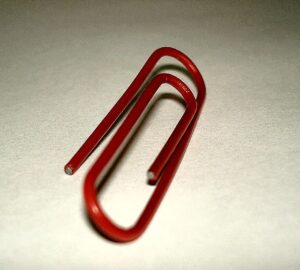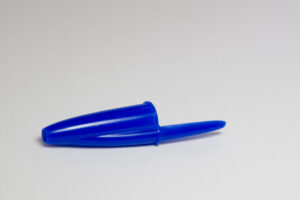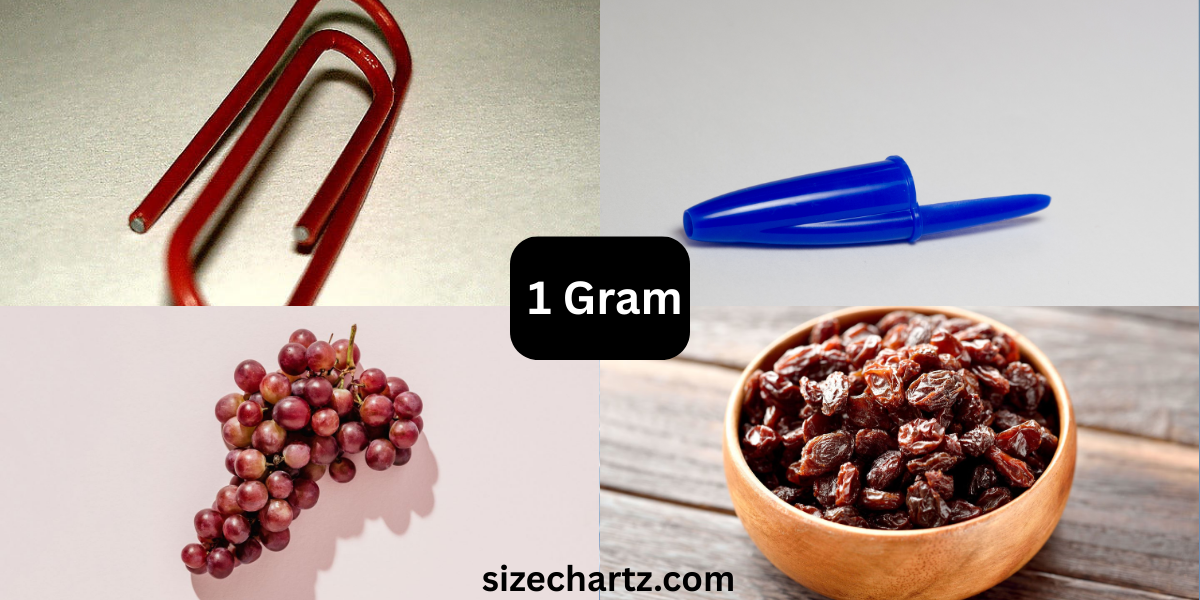Have you ever wondered just how light 1 gram really is? You’ve probably seen it written on nutrition labels, medication bottles, or postage charts, but unless you’ve worked with a scale, it can be tricky to picture in real life.
One gram is incredibly light—about the weight of a paperclip or a small pinch of salt. But knowing common things that weigh about 1 gram can be surprisingly useful. Whether you’re learning about weights for cooking, teaching kids about measurements, preparing for science experiments, or even mailing letters, having real-world comparisons helps make abstract numbers feel tangible.
In this guide, we’ll explore 9 of the most common everyday objects that weigh around 1 gram, explain why weight comparisons are helpful, and even clear up some common misconceptions. By the end, you’ll have a much better sense of what a gram feels like and how to use that knowledge in practical ways.
What Exactly Is a Gram?
Before diving into examples, let’s quickly define what a gram actually is.
- A gram (g) is a unit of mass in the metric system, which is used worldwide in science, medicine, and most countries for daily measurements.
- 1 gram = 0.001 kilograms
- 1 gram = 0.035 ounces (in the imperial system)
To put it in perspective, there are 28.35 grams in one ounce. That means a gram is tiny—about the weight of a small coin or a raisin.
Why Use Everyday Examples for 1 Gram?
Many people struggle to visualize small units of weight. Having real-life comparisons:
- Makes learning more engaging for kids and students
- Helps cooks measure ingredients more intuitively
- Assists in science labs or classrooms without precise scales
- Guides people who need accuracy in medication dosages
- Provides a quick reference for mailing letters or small packages
Now, let’s look at some familiar items that weigh about 1 gram.
9 Most Common Things That Weigh About 1 Gram
1. A Paperclip

Perhaps the most classic comparison for 1 gram is the humble paperclip.
- Weight: A standard small paperclip weighs roughly 1 gram
- Why it’s useful: It’s common in offices, schools, and homes, making it one of the easiest reference points for visualizing a gram.
Fun fact: Larger or coated paperclips can weigh closer to 1.5 grams, so the size matters. But if you hold a small one in your hand, that’s about a gram.
2. A Dollar Bill (or Other Currency Note)
Money can also serve as a surprisingly accurate weight reference.
- Weight: A U.S. dollar bill weighs exactly 1 gram
- Other currencies: Many other countries’ banknotes weigh close to the same
- Why it’s useful: Everyone has handled paper currency, so it provides a universal, relatable example
Imagine stacking 100 dollar bills—you’d be holding 100 grams, or about the weight of a small apple.
3. A Raisin

Food items can be great comparisons for understanding small weights.
- Weight: A single raisin weighs around 1 gram (though size varies slightly)
- Why it’s useful: People use grams in cooking and baking, and food-based comparisons make it easier to understand recipes and portions
Next time you measure dried fruit, you’ll know that about 100 raisins equals 100 grams.
4. A Thumbtack
Another household item close to a gram is a small thumbtack.
- Weight: Around 1 gram each
- Why it’s useful: Thumbtacks are tiny but sturdy, showing just how light 1 gram is in your hand
If you drop 10 thumbtacks into your palm, you’ll feel about 10 grams—still not very heavy at all.
5. A Pen Cap

That little plastic cap you use to cover your pen’s tip also weighs in at about a gram.
- Weight: Around 1 gram, depending on material and design
- Why it’s useful: It’s an everyday office or school item, easy to compare to other lightweight objects
It also helps demonstrate how plastics can vary in density—some thicker caps may weigh a bit more.
6. A Stick of Gum
If you’ve ever popped a piece of gum in your mouth, you’ve held about a gram without realizing it.
- Weight: One stick of gum (without wrapper) weighs roughly 1 gram
- Why it’s useful: Easy everyday reference that almost everyone can imagine
This one is especially useful when teaching kids, since gum is fun and relatable.
7. A Small Postage Stamp
Mail can also help you visualize weights.
- Weight: A single postage stamp is about 1 gram or less
- Why it’s useful: Knowing how much stamps and envelopes weigh helps with calculating mailing costs
If an envelope weighs 20 grams, you know it’s roughly the equivalent of 20 stamps.
8. A Grape

Like raisins, grapes are also good for comparison.
- Weight: A very small grape (especially seedless) is close to 1 gram
- Why it’s useful: Provides a natural food-based visual for kids and cooks alike
Of course, most grapes are larger (weighing 2–5 grams), but the tiniest ones can give you a sense of what 1 gram looks like.
9. A Feather
Not all feathers, of course, but a small down feather can weigh right around 1 gram.
- Weight: Tiny feathers weigh about 1 gram, while larger ones can be much heavier
- Why it’s useful: It shows how incredibly light 1 gram can feel
This comparison works beautifully when teaching how mass can vary across different materials.
Misconceptions About 1 Gram
- “1 gram is visible to the naked eye” – You can see an object weighing 1 gram, but you can’t really see the weight itself. Some people expect it to be nearly invisible.
- “1 gram is nothing” – While it’s light, in precise fields like medicine, chemistry, and baking, 1 gram can make a big difference.
- “All small objects weigh 1 gram” – Not true. Many small items weigh 5, 10, or even 20 grams. For example, a teaspoon of sugar is about 4 grams.
Real-Life Applications: Why Knowing 1 Gram Helps
- Cooking & Baking – Recipes (especially international ones) often use grams. Knowing what weighs about 1 gram helps with estimation when you don’t have a scale.
- Education & Science – Teachers use gram-based examples to help students visualize weight.
- Mail & Shipping – Lightweight items like stamps and paperclips help people estimate mailing weights.
- Fitness & Nutrition – Many track macros in grams, and real-world comparisons make it easier to picture portion sizes.
- Everyday Curiosity – It’s simply satisfying to understand what these tiny measurements mean in daily life.
Mistakes to Avoid When Estimating 1 Gram
- Relying only on sight – Objects can look light but weigh more than expected.
- Confusing grams with ounces – 1 ounce equals about 28 grams, so don’t mix them up.
- Overgeneralizing – Not every paperclip, grape, or raisin weighs exactly 1 gram—use them as approximations, not exact measures.
Tips for Visualizing Small Weights
- Think in multiples: If one raisin is ~1 gram, then 10 raisins equal ~10 grams.
- Use common items: Keep a paperclip or dollar bill handy to remind yourself of a gram.
- Practice with a kitchen scale: Weigh household items and compare to your mental estimates.
FAQs About Things That Weigh 1 Gram
Q: What household item weighs 1 gram?
A: A small paperclip, a dollar bill, or a raisin are easy household items that weigh about 1 gram.
Q: How much is 1 gram compared to a teaspoon?
A: 1 gram is about one-fourth of a teaspoon of sugar or salt.
Q: Can I measure 1 gram without a scale?
A: Yes, by using common references like a paperclip, dollar bill, or postage stamp.
Q: Why do scientists use grams instead of ounces?
A: Grams are part of the metric system, which is more precise and widely used in scientific work.
Q: What weighs exactly 1 gram?
A: A U.S. dollar bill is designed to weigh exactly 1 gram, making it one of the most reliable examples.
Q: Is 1 gram heavy?
A: Not at all—1 gram is very light, about the weight of a small raisin.
Conclusion
A gram may be one of the smallest everyday units of weight, but once you connect it to real objects—like a paperclip, raisin, or dollar bill—it becomes easier to understand and visualize.
Next time you’re cooking, mailing a letter, or teaching someone about measurements, you’ll have a set of handy mental references to draw on.
By recognizing the 9 common things that weigh about 1 gram, you’ve gained a simple but powerful tool: the ability to see and feel what a gram really means in your daily life.


Leave a Reply